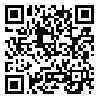Volume 56, Issue 2 (30 1998)
Tehran Univ Med J 1998, 56(2): 72-76 |
Back to browse issues page
Download citation:
BibTeX | RIS | EndNote | Medlars | ProCite | Reference Manager | RefWorks
Send citation to:



BibTeX | RIS | EndNote | Medlars | ProCite | Reference Manager | RefWorks
Send citation to:
Moghaddam M, Yaminisharif A. Radio frequency in treatment of AVNRT arrhythmia. Tehran Univ Med J 1998; 56 (2) :72-76
URL: http://tumj.tums.ac.ir/article-1-1579-en.html
URL: http://tumj.tums.ac.ir/article-1-1579-en.html
Abstract: (8683 Views)
AV-node modification by catheter RF energy delivery is treatment of choice in the symptomatic patients with AVNRT. This study included 30 patients with AVNRT (19 women, 11 men). We did slow pathway ablation in 29 cases successfully. Maximum effective energy delivery was 40 watts for 40 msec. 1:1 AV conduction increased from 290±40 msec before ablation to 340±65 msec after ablation. Also AV-node ERP increased from 235±35 msec before ablation to 280±65 msec after that. There was no recurrence of arrhythmia in the group with slow pathway ablation during 28 months follow-up. We did fast pathway ablation in one case. In this patient AH interval increased from 120 to 200 msec, maximum RF energy delivery was 20 watts for 20 msec (2 times). Recurrence of non sustained PSVT occurred in this patients 20 months after RF ablation. There was no case of permanent AV Block. We recommond slow pathway catheter RF ablation in patients with symptomatic AVNRT.
| Rights and permissions | |
 |
This work is licensed under a Creative Commons Attribution-NonCommercial 4.0 International License. |





